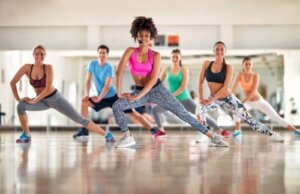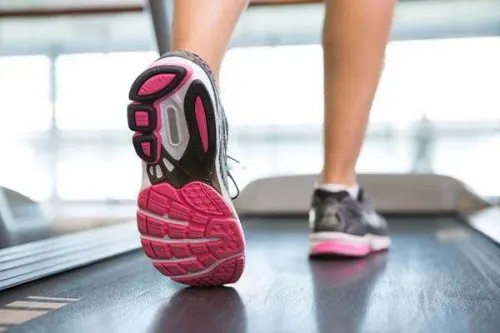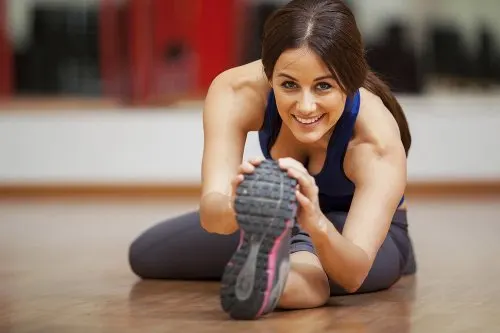Physical Activity Guidelines for Adults


Reviewed and approved by the pharmacist Sergio Alonso Castrillejo
It has been proven through multiple studies that exercise is essential for the physical and mental health of all people. Physical activity in adults in particular is a passport to reducing a person’s risk of chronic diseases that can develop over the years.
The Center for Disease Control and Prevention (CDC) of the United States recommends 2.5 to 5 hours of exercise per week for adults between the ages of 18 and 65 in its publication Physical Activity: Guidelines for Americans.
The older you get, the more necessary exercise becomes. Therefore, after the age of 65, three to five hours of light physical activity that includes muscle strengthening is highly recommended, as long as your physical condition and health permit it.
The benefits of exercise in adults

Physical activity in adults helps to prevent a large number of chronic diseases, according to the CDC and a publication of the World Health Organization. Among these conditions, the following stand out:
- Obesity
- Diabetes
- Coronary heart disease
- High blood pressure
- High cholesterol
- Osteoarthritis
- Anxiety and depression
In addition to that, a study published in the Journal of Sport and Exercise Psychology shows that physical activity in adults improves mood and boosts optimism if practiced regularly. This is because it helps release serotonin and endorphins.
Also, according to research published in Sports Medicine, exercise increases energy levels. So, if one day you’re not feeling too strong, working out might be the solution, even if it sounds counterintuitive.
Types of physical activity for adults
There are certain types of physical activity that involve specific efforts and have particular benefits. Below, we will delve into two of the most recommended for adults.
Aerobic exercises

Aerobic exercises require a high respiratory and heart rate to burn fats and sugars with oxygen. These are exercises that help fight obesity and give greater resistance to the body, something confirmed by a study published in The American Journal of Medicine.
The category of aerobic exercises includes walking, running, cycling, dancing, rowing, swimming, and others that require constant movement.
Strengthening exercises
These are those that increase muscle mass by lifting weights with repetitions that vary according to your objective, which can be toning or hypertrophy. In addition to muscles, strengthening exercises help the health of bones and joints. In fact, this relationship is confirmed by a Mayo Clinic article.
The main strengthening activities are weights, elastic band exercises, dynamic tension exercises -exercises using the body’s own weight-, power yoga, and stretching exercises, among others.
We think you may also enjoy reading this article: Compensatory Exercises: What Are They and When Should You Do Them?
Physical activity guidelines for adults

The CDC also recommends spending less time sitting and more time moving. In fact, almost all health professionals express themselves in the same sense. The best option is to exercise a few hours a week, although the exact amount may vary depending on whether moderate or high-intensity work is performed.
Recommendations from sports and health institutions, such as those provided in research published by the Journal of Sport and Health Research, are to do three days of moderate aerobic exercise and two days of strength exercise.
For aerobic exercise, the following specifications are detailed:
- 30 to 60 minutes of moderate exercise five days a week.
- 20 to 60 minutes of vigorous exercise three days a week.
For strength exercises with weights or elastic bands, alternating sets that include arm, chest, leg, and abdominal strengthening are recommended. Sets of 8 to 10 repetitions can be done with three-minute rests.
Physical activity guidelines: Moderate exercises
Examples of moderate exercises are:
- Walking
- Recreational swimming
- Bicycling
- Tennis (doubles)
- Yoga
- Dancing
- Water aerobics
Vigorous exercises
If you choose to do a more demanding type of physical activity, here are some options:
- Running
- Swimming
- Tennis (singles)
- Dancing (Zumba or body jam, for example)
- Fast-paced cycling
- Jump rope
- Hiking
- Aerobics or kick-boxing
Like this article? You may also like to read: The Good Morning Barbell Exercise: Technique and Benefits
Tips for before you start
To take advantage of all the benefits of physical activity detailed above and in turn reduce the risk of injury, pay attention to these guidelines:
- Before starting and at the end of your workouts, perform stretching exercises to reduce the risk of injury and attenuate post-exercise pain. The importance of stretching is ratified by studies such as one published in BMJ.
- Don’t do more than you can handle. The idea of exercise is not to exhaust the body, but to tone it and work it little by little. If you’re not used to exercise, start progressively and increase the time and demand day by day.
- A good idea to start with is walking. Start with 10 minutes a day, then increase to 15 minutes and speed up the pace. When you feel in better condition, you can increase the time, and even move on to more demanding exercises, such as running or cycling.
- Over time, start adding strengthening activities.
- Find friends or encourage your partner or family to exercise with you. Research published in Psychology of Sports and Exercise states that doing it in company is more fun and increases motivation. Another great alternative is to practice team sports.
- Don’t set goals. Just allow yourself to progress slowly through your workouts without setting goals that you may not reach. That can be frustrating and will cause you to lose motivation.
- Maintain a balanced diet. Exercise and nutrition go hand in hand. If you eat healthily, you will notice that you progress better in your exercise and you will feel better. A proper weight will also prevent possible injuries and help you perform better in any exercise.
The importance of physical activity in adults
Ultimately, keep in mind that it’s highly recommended to consult with a specialist before beginning any new activity or training routine. The opinion of a physical trainer and the help of a nutritionist to diagram the diet are always valuable.
Likewise, if you have any disease or health condition, ask your doctor if you have limitations for certain types of exercises. With these keys to physical activity in adults, you can get started on a healthier and happier life through exercise!
All cited sources were thoroughly reviewed by our team to ensure their quality, reliability, currency, and validity. The bibliography of this article was considered reliable and of academic or scientific accuracy.
- Helen Jõesaar, Vello Hein, Martin S. Hagger. 2011. Peer influence on young athletes’ need satisfaction, intrinsic motivation and persistence in sport: A 12-month prospective study.
Psychology of Sport and Exercise. https://doi.org/10.1016/j.psychsport.2011.04.005.
(http://www.sciencedirect.com/science/article/pii/S1469029211000537) - Jamtvedt G, Herbert RD, Flottorp S, et al. 2010. A pragmatic randomised trial of stretching before and after physical activity to prevent injury and soreness. British Journal of Sports Medicine. https://bjsm.bmj.com/content/44/14/1002.citation-tools
- Estévez-López, F.; Tercedor, P.; Delgado-Fernández, M. (2012). Recomendaciones de actividad
física para adultos sanos. Journal of Sport and Health Research. 4(3):233-244. - Adrian Thorogood, Salvatore Mottillo, Avi Shimony, Kristian B. Filion, Lawrence Joseph, Jacques Genest, Louise Pilote, Paul Poirier, Ernesto L. Schiffrin, Mark J. Eisenberg. 2011.
Isolated Aerobic Exercise and Weight Loss: A Systematic Review and Meta-Analysis of Randomized Controlled Trials. The American Journal of Medicine. https://doi.org/10.1016/j.amjmed.2011.02.037.
(http://www.sciencedirect.com/science/article/pii/S0002934311003779) - Puetz TW. Physical activity and feelings of energy and fatigue: epidemiological evidence. Sports Med. 2006;36(9):767-80. doi: 10.2165/00007256-200636090-00004. PMID: 16937952.
- Kavussanu, M., & McAuley, E. (1995). Exercise and Optimism: Are Highly Active Individuals More Optimistic?, Journal of Sport and Exercise Psychology, 17(3), 246-258. Retrieved Oct 6, 2020, from https://journals.humankinetics.com/view/journals/jsep/17/3/article-p246.xml
- Actividad física. Organización Mundial de la Salud. https://www.who.int/dietphysicalactivity/pa/es/
- Physical Activity: Guidelines for Americans. 2nd edition. 2018. U.S. Department of Health and Human Services. https://health.gov/sites/default/files/2019-09/Physical_Activity_Guidelines_2nd_edition.pdf
- Strength training: Get stronger, leaner, healthier. Mayo Clinic. https://www.mayoclinic.org/healthy-lifestyle/fitness/in-depth/strength-training/art-20046670
This text is provided for informational purposes only and does not replace consultation with a professional. If in doubt, consult your specialist.








